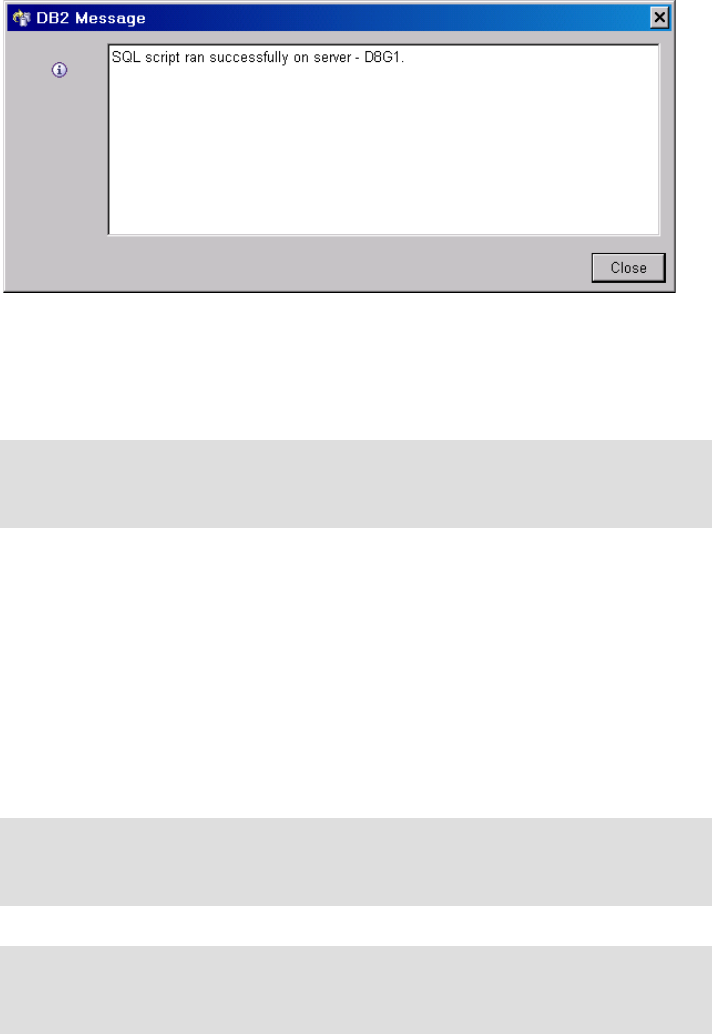
Chapter 3. Bidirectional Q replication on z/OS platforms 273
CREATE CONTROL TABLES FOR MONITOR CONTROL SERVER IN ZOS PAGE LOCK DB "QREPITSO"
NAMING PREFIX QM CREATE USING PROFILE MYPROF ROW LOCK DB "QREPITSO" NAMING
PREFIX QM CREATE USING PROFILE MYPROF2;
The generated SQL
3
shown in Example 3-54 can be ported to z/OS for execution
under SPUFI or DSNTEP2.
Example 3-54 Generated script for creating monitor control tables on D8G1
CONNECT TO D8G1 USER XXXX USING XXXX;
CREATE TABLESPACE TSMROW1
IN QREPITSO
SEGSIZE 4
LOCKSIZE ROW
CCSID EBCDIC;
CREATE TABLE ASN.IBMSNAP_CONTACTS(
CONTACT_NAME VARCHAR(127) NOT NULL,
EMAIL_ADDRESS VARCHAR(128) NOT NULL,
ADDRESS_TYPE CHAR(1) NOT NULL,
DELEGATE VARCHAR(127),
DELEGATE_START DATE,
DELEGATE_END DATE,
DESCRIPTION VARCHAR(1024))
IN QREPITSO.TSMROW1;
CREATE TYPE 2 UNIQUE INDEX ASN.IBMSNAP_CONTACTSX
ON ASN.IBMSNAP_CONTACTS(
CONTACT_NAME ASC);
CREATE TABLESPACE TSMROW2
IN QREPITSO
SEGSIZE 4
LOCKSIZE ROW
CCSID EBCDIC;
CREATE TABLE ASN.IBMSNAP_ALERTS(
MONITOR_QUAL CHAR(18) NOT NULL,
ALERT_TIME TIMESTAMP NOT NULL,
COMPONENT CHAR( 1) NOT NULL,
SERVER_NAME CHAR(18) NOT NULL,
SERVER_ALIAS CHAR( 8),
SCHEMA_OR_QUAL VARCHAR(128) NOT NULL,
SET_NAME CHAR(18) NOT NULL WITH DEFAULT ' ',
CONDITION_NAME CHAR(18) NOT NULL,
OCCURRED_TIME TIMESTAMP NOT NULL,
ALERT_COUNTER SMALLINT NOT NULL,
ALERT_CODE CHAR( 10) NOT NULL,
3
When ASNCLP specifies SET RUN SCRIPT LATER, the SQL that is generated by ASNCLP will be
stored in a file on the workstation, in the same directory that ASNCLP was executed from. It will have
the name of the DB from the SET SERVER Statement with an .sql extension, for example, D8G1.sql.
If the ASNCLP generates sql for two servers there will be two files generated.



